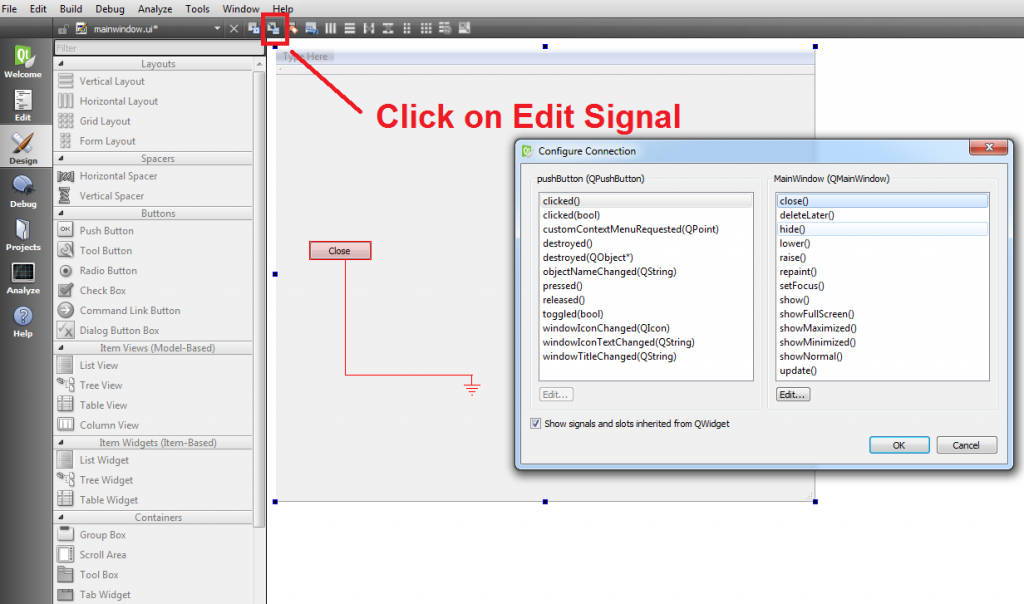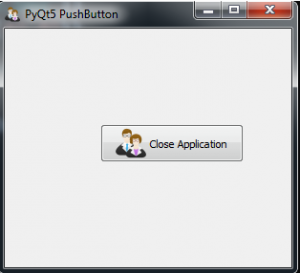Example Slot Signal
The Boost.Signals2 library is an implementation of a managed signals and slots system. Signals represent callbacks with multiple targets, and are also called publishers or events in similar systems. Signals are connected to some set of slots, which are callback receivers (also called event targets or subscribers), which are called when the signal is 'emitted.'
- Example Slot Signal Circuit
- Example Slot Signal Test
- Example Slot Signal Booster
- Example Slot Signal Booster
While being better in many regards, the new connection syntax in Qt5 has one big weakness: Connecting overloaded signals and slots. In order to let the compiler resolve the overloads we need to use staticcasts to member function pointers, or (starting in Qt 5.7) qOverload and friends. Signals and Slots. Signals and Slots are a feature of Qt used for communication between objects. When something happens to an object, it can emit a signal. Zero or more objects can listen for this signal using a slot, and act on it. The signal doesn’t know if anything is listening to it, and the slot doesn’t know what object called it.
An example of signals and slots connections Slots can be used for receiving signals, but they are also normal member functions. Just as an object does not know if anything receives its signals, a slot does not know if it has any signals connected to it. QWidget has a public slot called show.You can connect your button's clicked signal to your widget's show slot. Read more about signals and slots here. Classesimplementing slots must inherit fromhas slots. A slot can either be called through the signal/slot mechanism, or it can be called directly as an ordi-narymemberfunction. 2.5 Completelydisconnectingasignal To disconnect a signal completely from all slots to which it is currently connected, call the signal’s disconnect allmember.
Signals and slots are managed, in that signals and slots (or, more properly, objects that occur as part of the slots) can track connections and are capable of automatically disconnecting signal/slot connections when either is destroyed. This enables the user to make signal/slot connections without expending a great effort to manage the lifetimes of those connections with regard to the lifetimes of all objects involved.

Example Slot Signal Circuit
When signals are connected to multiple slots, there is a question regarding the relationship between the return values of the slots and the return value of the signals. Boost.Signals2 allows the user to specify the manner in which multiple return values are combined.
This documentation describes a thread-safe variant of the original Boost.Signals library. There have been some changes to the interface to support thread-safety, mostly with respect to automatic connection management. This implementation was written by Frank Mori Hess. Acknowledgements are also due to Timmo Stange, Peter Dimov, and Tony Van Eerd for ideas and feedback, and to Douglas Gregor for the original version of Boost.Signals this effort was based on.
- PyQt Tutorial
Example Slot Signal Test
- PyQt Useful Resources
Example Slot Signal Booster
- Selected Reading
Unlike a console mode application, which is executed in a sequential manner, a GUI based application is event driven. Functions or methods are executed in response to user’s actions like clicking on a button, selecting an item from a collection or a mouse click etc., called events.
Widgets used to build the GUI interface act as the source of such events. Each PyQt widget, which is derived from QObject class, is designed to emit ‘signal’ in response to one or more events. The signal on its own does not perform any action. Instead, it is ‘connected’ to a ‘slot’. The slot can be any callable Python function.
In PyQt, connection between a signal and a slot can be achieved in different ways. Following are most commonly used techniques −
Example Slot Signal Booster
A more convenient way to call a slot_function, when a signal is emitted by a widget is as follows −
Suppose if a function is to be called when a button is clicked. Here, the clicked signal is to be connected to a callable function. It can be achieved in any of the following two techniques −

or
Example
In the following example, two QPushButton objects (b1 and b2) are added in QDialog window. We want to call functions b1_clicked() and b2_clicked() on clicking b1 and b2 respectively.
When b1 is clicked, the clicked() signal is connected to b1_clicked() function
When b2 is clicked, the clicked() signal is connected to b2_clicked() function
Example
The above code produces the following output −